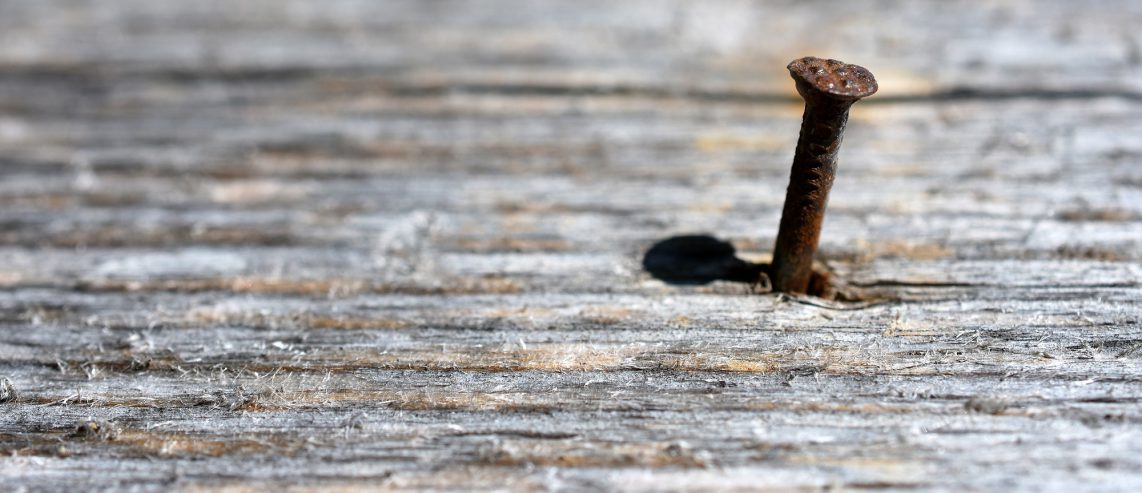When you were a child, your parents probably told you not to touch rusty objects. When you played outdoors, they warned you to look out for rusty nails. But is rust harmful to skin?
Here are the facts about rust and its effects on your skin.
What Is Rust?
We’ve all seen iron oxide — the reddish-brown, flaky substance known as rust — on old cars, fences, and other metal objects.
Rust is the result of a chemical reaction that happens when iron meets air and water. If you leave an iron pot or tool outdoors or in contact with moisture, it will rust.
Never Miss a Beat!
Subscribe to Our HealthBeat Newsletter!
Thank you for subscribing!
You can now select the specific newsletters you'd like to receive.
You are already subscribed.
Subscribe to more newsletters in our email preference center.
Sorry, an error occurred. Please try again later.
Get Healthy Tips Sent to Your Phone!
Is Rust Harmful to Skin?
The short answer is no. Rust can stain your skin (as it will stain clothing, wood, or other surfaces) but there’s nothing inherently harmful in it. Even a wound from a rusty object isn’t necessarily worse than a wound from a non-rusty object (see more below).
If you end up with a rust stain on your skin, it will eventually wash off with soap and water. Tougher stains may respond more quickly to a scrub made from lemon juice and salt.
One caveat: Don’t use commercial rust removal products made for household objects on your body. They may contain harsh chemicals that will hurt your skin.
Does Rust Cause Tetanus?
Rust does not cause tetanus.
Many people grow up believing they will get tetanus from stepping on a rusty nail. And while a puncture wound from a nail is something to take seriously, you don’t get tetanus from rust.
Rather, bacteria that live in soil and feces cause tetanus. But the places where tetanus show up — rotting leaves, dirt, manure — are typically the same places where rusty objects turn up. And a puncture wound from a rusty nail gives the bacteria a way to get into your bloodstream.
Tetanus Basics
People get tetanus (“lockjaw”) from bacteria called Clostridium tetani, found in soil, dust, and human and animal feces. The bacteria thrive in the same kind of places where you find rusty nails, old fencing, and other debris.
Puncture wounds (like those made by nails) give bacteria a pathway to get deep into the body. But the bacteria that cause tetanus can also enter the body through a small cut or scratch.
When these bacteria invade the body, they produce a toxin that causes muscle contractions and convulsions. These painful contractions usually begin in the jaw, then move to the neck and limbs. People with tetanus have trouble swallowing and sometimes have seizures.
Tetanus is rare today because we have effective vaccines against the disease. According to the Centers for Disease Control and Prevention, there are only 30 reported cases of tetanus in the U.S. each year.
But tetanus is very serious if you do get it. Between 10% and 20% of people who get tetanus die from it.
How to Avoid Getting Tetanus
Of course, you should avoid stepping on nails or getting any type of puncture wound. If you’re outdoors or in a setting like a barn, wear hard shoes. Use caution around old buildings or construction sites.
But accidents do happen to active children and adults. Having the tetanus vaccine is the only sure way to prevent tetanus.
Babies and children should get five shots of DTaP (a vaccine protecting against diphtheria, pertussis, and tetanus) before age 6. Preteens get a booster (Tdap) between age 11 and 12.
Adults who have never gotten a tetanus vaccine should get a shot of Tdap. Then they should have a booster every 10 years. Pregnant people also receive a Tdap booster between 27 and 36 weeks of pregnancy, (although this is primarily to pass along pertussis immunity to the fetus), says Stacy Bartlett, MD, Squirrel Hill Family Medicine-UPMC. Dr. Bartlett adds, “If you do have a wound that puts you at higher risk for tetanus and your Tdap booster is more than five years old, your doctor might recommend an additional Tdap shot at that time.”
When to Call the Doctor
You should go to the emergency room or urgent care for any deep cut or puncture wound. It doesn’t matter if the injury was from a rusty object or not.
If you’re not sure when you had your last tetanus shot, call your doctor to check your records. You need a tetanus vaccine if you haven’t had one in 10 years.
Editor's Note: This article was originally published on , and was last reviewed on .
Sources
McGill Office for Science and Society, Rust Doesn't Give You Tetanus, Link
CDC, Vaccine (Shot) for Tetanus, Link
National Library of Medicine, The Quick and Dirty: A Tetanus Case Report, Link
National Foundation for Infectious Diseases, Facts About Tetanus for Adults, Link
Ndhealth.gov, Tetanus — Are You at Risk? Link
Discovery.com, You Don't Get Tetanus From Rust, Link
About UPMC
Headquartered in Pittsburgh, UPMC is a world-renowned health care provider and insurer. We operate 40 hospitals and 800 doctors’ offices and outpatient centers, with locations throughout Pennsylvania, Maryland, New York, West Virginia, and internationally. We employ 4,900 physicians, and we are leaders in clinical care, groundbreaking research, and treatment breakthroughs. U.S. News & World Report consistently ranks UPMC Presbyterian Shadyside as one of the nation’s best hospitals in many specialties and ranks UPMC Children’s Hospital of Pittsburgh on its Honor Roll of America’s Best Children’s Hospitals. We are dedicated to providing Life Changing Medicine to our communities.

